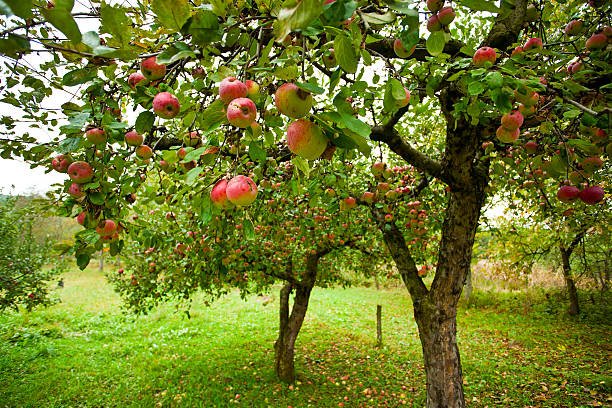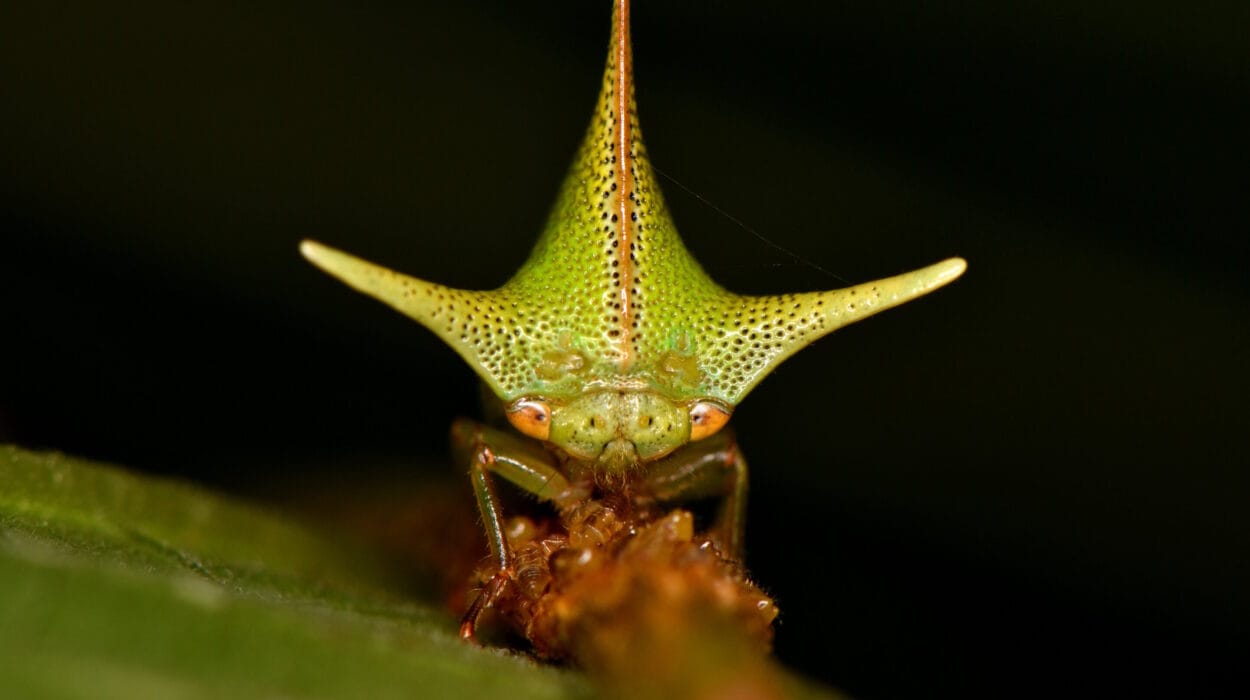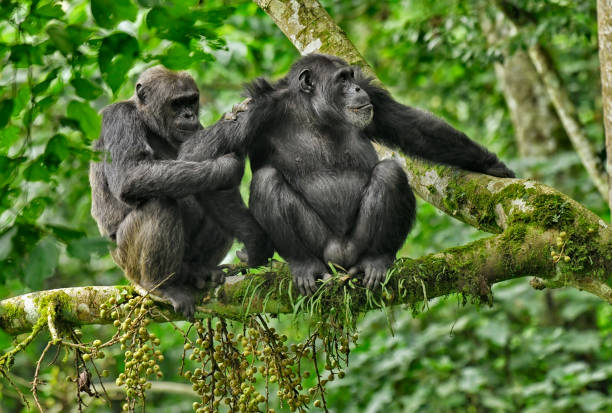Some truths whisper so softly they go unnoticed for centuries. The secrets of trees belong to this hushed realm, hidden in forests where the wind sighs through leaves and shafts of sunlight stipple the forest floor. To walk among trees is to step into an ancient cathedral whose pillars breathe, whose vaulted ceiling rustles with life unseen. And yet, for much of human history, we believed trees to be nothing but passive sentinels, silent and solitary.
We were wrong.
Science now reveals that forests pulse with a quiet, invisible chatter. Trees talk, trade, nurse one another, and even wage underground wars. They store memories, remember friends and enemies, and sometimes sacrifice themselves for kin. Their roots entwine in secret networks, transmitting messages of distress, warning of drought, or sending chemical cries of alarm when insects attack. In the living wood around us, there’s drama, tenderness, betrayal, and fierce loyalty. The forest is alive in ways our ancestors could scarcely imagine.
Come, then, deeper into the green shadows. Let us wander among giants and saplings, into the secret lives of trees.
When Trees Learned to Speak
Once, the notion that trees could communicate sounded like the stuff of fairy tales or poetry. After all, trees do not speak words; they have no mouths, no tongues, no vocal cords. But language, as it turns out, comes in many forms. For trees, it is chemical and electrical, subtle and astonishingly complex.
Imagine a tall spruce in a Canadian forest. One summer morning, a ravenous insect army descends upon its needles. As the spruce suffers the attack, it releases volatile organic compounds—a cocktail of airborne chemicals—into the breeze. To us, these chemicals might smell sharp, resinous, tangy. To other spruces nearby, they are a scream. The neighboring trees receive the signal and respond, pumping bitter compounds into their own leaves and needles, making themselves less tasty, less vulnerable.
The “language of trees” is even older than words. Fossil evidence suggests plants were chemically communicating half a billion years ago, long before the first creature crawled from the sea.
But air-borne signals are only half the story. Beneath the soil lies another realm—dark, hidden, and more interconnected than the internet above ground.
The Hidden Web Beneath Our Feet
If you were to kneel in a forest and gently brush away the leaves, dig through the topsoil, and peer with a magnifying glass, you would discover threads so fine they’re almost invisible. These threads are fungal filaments called hyphae. Woven together, they form mycelium, a network that links trees in a vast, living internet.
This “Wood Wide Web,” as scientists sometimes call it, changes everything we thought we knew about trees. The mycelium attaches to tree roots, forming symbiotic partnerships. The fungi feed on sugars produced by the tree’s photosynthesis. In return, they supply the tree with minerals and water drawn from far reaches of the soil.
But the relationship goes deeper. Through these fungal networks, trees share nutrients, send warnings, and even support weaker or younger neighbors. A mother tree, towering over her offspring, may funnel carbon to her seedlings through the mycorrhizal network, helping them survive shaded conditions.
In British Columbia’s forests, ecologist Suzanne Simard discovered that Douglas fir trees and paper birches exchange carbon back and forth depending on the season. When the firs are shaded, the birches help. In winter, when birches lose their leaves, firs repay the favor. It is not always cooperation; sometimes it’s competition. Trees of one species may flood the network with chemicals that hinder competitors. The forest, like human society, is a place of alliances, rivalries, and secret deals.
Memory in the Wood
We rarely think of trees as beings that “remember.” Yet they do, in ways both physical and chemical.
When drought strikes, trees undergo physiological changes, closing pores to conserve water, shifting growth patterns. Some trees remember these hardships and remain cautious long afterward, keeping their stomata narrower, growing more slowly, even when rains return. It’s as though the trees carry trauma etched into their very cells—a memory of suffering.
The rings within a tree’s trunk are diaries of its life. Wide rings speak of years flush with rain and sunshine. Narrow rings record drought, insect plagues, or brutal winters. Scientists can read these rings like historians studying ancient manuscripts. Through dendrochronology—the study of tree rings—we know when the Vikings reached North America, when medieval droughts ravaged Europe, even the dates of volcanic eruptions half a world away.
Memory also extends to chemical responses. When a tree survives an insect attack, it “remembers” the assault, often maintaining higher levels of protective compounds in future years, ready for another onslaught.
This memory shapes not just individual trees, but entire forests, which become libraries of environmental history.
Trees That Count Time
Light and darkness are the clocks by which trees keep time. Each day, trees sense sunrise and sunset through photoreceptors in their leaves. As daylight shortens in autumn, chlorophyll fades, revealing hidden pigments of gold and crimson. The tree senses the oncoming cold and begins preparing for dormancy.
In temperate forests, timing is everything. Trees that leaf out too early risk a killing frost. Those that leaf out too late miss the sunlight crucial for growth. Trees synchronize their cycles not just with seasons but with the lives of animals. Oaks, for example, vary their acorn production year to year, producing mast crops in certain years. These bumper years swamp the appetites of squirrels and deer, ensuring that some seeds survive to sprout.
Some trees even appear to coordinate mast years across entire regions, hinting at complex communication, possibly via environmental cues or underground networks.
Kinship in the Canopy
In the dense jungles of South America, a towering kapok tree spreads its massive branches like a king holding court. In the temperate forests of North America, old beeches rise in silent groves, their smooth trunks pale and dignified. And in every forest across the globe, trees stand in quiet communities.
Modern research reveals that trees recognize their own kin. Experiments show that seedlings planted near their genetic relatives grow differently than those near strangers. Roots are less aggressive toward kin, intertwining gently, sharing resources more generously. Among strangers, roots tangle in silent warfare, each trying to capture more soil and nutrients.
Older trees—the so-called mother trees—play a profound role in these kin networks. They support their offspring, transmitting carbon, water, and nutrients. When a mother tree is injured or dying, she sometimes dumps her remaining resources into the network, giving her life force to her young.
It’s a forest testament to selflessness, a quiet sacrifice repeated endlessly across centuries.
Trees That Bleed, Trees That Burn
Though forests often feel serene, they are no strangers to violence. Some trees defend themselves in ways dramatic and brutal.
In African savannas, acacia trees are notorious for their chemical warfare. When giraffes begin munching on their leaves, the trees release tannins, making the foliage bitter and potentially toxic. They also emit ethylene gas, drifting on the breeze to nearby acacias, warning them to prepare their own chemical defenses. Giraffes, clever creatures, often feed while moving against the wind to avoid triggering the alarm.
Other trees wield thorns, spines, or even toxic sap. In Central America, the sandbox tree, nicknamed the “dynamite tree,” bears spiky fruit pods that explode with a loud bang, scattering seeds at speeds up to 150 miles per hour. It’s nature’s shrapnel bomb.
Fire, too, is a companion to many trees. The towering sequoias of California depend on fire to clear underbrush and crack open their resin-sealed cones. The lodgepole pine’s cones remain sealed for decades, opening only in the searing heat of flames.
These dramatic defenses are not acts of aggression but survival. In the forest, as in all life, danger and beauty entwine.
Whispers of the Ancient Ones
Some trees have lived longer than human civilization itself.
High in the White Mountains of California stands Methuselah, a bristlecone pine older than the pyramids, older than the Iliad, older than Christianity or Buddhism. It germinated nearly 5,000 years ago, growing slowly in the harsh winds and freezing temperatures. Its twisted trunk tells the story of millennia—droughts, storms, cosmic rays, and the slow march of time.
In Sweden, a spruce named Old Tjikko has stood for nearly 10,000 years, cloning itself through new trunks growing from the same root system. In Tasmania, Huon pines form sprawling groves that have persisted for 10,500 years, each tree a chapter in an unbroken story.
These ancient beings are living archives. Within them lie clues to past climates, atmospheric shifts, volcanic eruptions, and cosmic events.
Standing before such a tree, one cannot help but feel humbled, as though in the presence of something sacred.
The Forest’s Role in Our Survival
It is tempting to romanticize trees merely for their beauty, but they are far more than scenic backdrops. Trees are the green lungs of our planet, inhaling carbon dioxide, exhaling oxygen. Each mature tree can absorb around 48 pounds of carbon dioxide per year. In forests, this adds up to billions of tons of carbon sequestered, slowing the acceleration of climate change.
Forests regulate rainfall, stabilize soils, shelter countless species, and provide food, medicine, and timber. They anchor cultures and religions, featuring in myths from Yggdrasil, the Norse world tree, to the sacred groves of India.
Yet forests are under siege. Chainsaws, fires, disease, and climate change claim millions of acres each year. The Amazon burns. Temperate forests shrink. Entire species vanish.
But hope persists. Across the world, movements rise to reforest scarred lands. Scientists study how to plant diverse, resilient forests rather than sterile monocultures. Indigenous peoples lead efforts to protect ancestral lands. Trees, patient though they are, cannot fight alone. Their future—and ours—are entwined.
Listening to Trees
In recent decades, scientists and writers alike have begun urging us to listen to trees. To many Indigenous cultures, this was never news. For centuries, they have believed that forests are sentient, alive, communicative. Now, Western science is catching up, confirming that the forest is not merely a collection of individuals but a community.
Peter Wohlleben, the German forester and author of The Hidden Life of Trees, sparked global interest by describing trees as social beings with families, friends, and feelings. Critics argue about anthropomorphism, cautioning that trees do not feel as humans do. Yet all agree on one truth: trees are far more complex than we once imagined.
Even if trees do not “feel” emotions as humans do, they sense, respond, remember, and adapt. And in a world threatened by ecological crisis, perhaps the most urgent lesson trees offer us is interdependence. Trees do not stand alone. Neither can we.
A Prayer in Green Leaves
There’s a hush that falls in a forest at dusk, a lullaby of rustling leaves and birdsong fading into night. It is in these moments that the truth presses gently upon the soul: the world is older and wiser than we know.
Trees live slowly, on timescales that dwarf human lives. A seed may wait a hundred years for the right conditions. A trunk grows a fraction of an inch each year. A fallen tree nourishes the soil for centuries. Time itself moves differently among trees.
Perhaps the greatest secret of trees is patience. In a world obsessed with speed, they remind us of a deeper rhythm—a pulse measured in seasons, centuries, and epochs. In the hush of forests, trees stand not as monuments to the past, but as living prayers for the future.
We enter a forest thinking we see wood and leaves, but we emerge realizing we have stepped into a living, breathing civilization. Trees are storytellers, guardians, chemists, warriors, and nurturers. They are the architects of the atmosphere, the weavers of underground tapestries, and the silent witnesses to history.
And so, the next time you walk beneath a canopy of green, pause for a moment. Lay your hand on a rough trunk. Listen to the rustle of leaves. Feel the cool breath rising from the soil. Know that around you hum countless invisible conversations, secrets of survival, love, and memory.
For in the secret lives of trees, we find not only the story of forests—but the story of ourselves.






